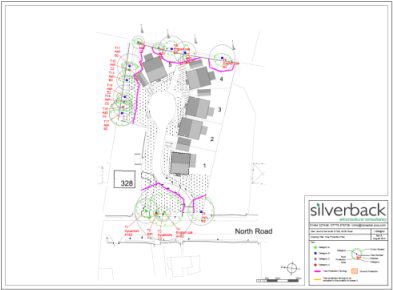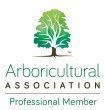Tree Planning Consultancy
With over 20 years experience within the arboricultural industry Silverback Arboricultural Consultancy offers an holistic approach to all your tree management needs.
For planning applications to succeed, planning legislation requires that trees are assessed and fully considered from the outset of the design process by a suitably qualified arboriculturalist. As a minimum, Local Planning Authorities require compliance with the methodology set out in ‘British Standard BS5837: 2012 Trees in relation to design, demolition and construction– Recommendations.
Pre-Commencement Arboricultural Survey
Where there are existing trees on, or adjacent to, an area proposed for development, a pre-commencement arboricultural survey should be undertaken. The survey should be carried out in accordance with British Standard BS5837: 2012. The survey will record tree species, tree dimensions, age class, useful life expectancy and general observations. The quality of the trees will be graded in accordance with the cascading chart of tree quality in BS5837, ranging from A grade-top quality trees through to U trees requiring removal or with very limited life expectancy . The survey is aimed at assisting in the design process to allow the retention of the higher grade trees.

Tree Constraints Plan (TCP)
This is a scaled plan indicating the Root Protection Area (RPA) of the existing trees on site calculated in accordance with BS5837:2012. For single stem trees, the Root Protection Area (RPA) is calculated as an area equivalent to a circle with a radius 12 times the stem diameter, for multi- stemmed trees a calculated stem diameter is used. A tree constraints plan will usually accompany the survey results to indicate any constraints on potential site layout as a result of the trees. Other issues addressed within the (TCP) could include future crown size and issues of potential shading.
Arboricultural Impact Assessment (AIA)
In addition to the arboricultural survey and tree constraints plan, many Local Authorities are now requesting that an arboricultural impact assessment is submitted as part of any planning application where trees are present. An AIA highlights any potential conflict between the proposed layout and the existing trees. Findings from the AIA would indicate whether an arboricultural method statement (AMS) is required. Details of existing trees proposed for retention and those to be removed would be included in the assessment.
Tree Protection Plan (TPP)
This is a scaled plan indicating the position of protective fencing in order to safe guard the retained tree during the development. The TPP could also illustrate where there is encroachment into the Root Protection Area (RPA) of trees, indicating where specialist techniques are required to avoid root damage. The TPP will be used in conjunction with the recommendations contained within the arboricultural method statement.
Arboricultural Method Statement (AMS)
AMS contains recommended construction methods to minimize impact on the retained trees where there is encroachment into the Root Protection Area (RPA) of the tree. These could include suitable ground protection, no dig techniques or specialist foundation construction. The arboricultural method statement and tree protection plan provide a procedure to protect retained trees during the construction process.
Protected Trees
Works to trees covered by Tree Preservation Order or within a Conservation Area.
Tree Preservation Order and Conservation Areas offer protection for trees under the Town and Country Planning Act 1990. Prior consent from the local planning authority is generally required before any works can be undertaken on protected trees. This process can take up to 8 weeks and consent is dependent of the correct information and acceptable tree work proposals being submitted for approval. There are exceptions to this rule such as dead or dying trees where works can be undertake following a 5 day notice of intent. However the onus of proof is on the tree owner and contractor if any works are undertaken without prior consent from the local authority.
Silverback Arboricultural Consultancy can undertake an assessment of the protected tree and submit a planning application on your behalf, recommending works to address the issues you have with the trees and offer professional justification for any works recommended.
We can also assist with in an appeal against the serving of a TPO or the refusal of an application for works to protected trees.
Get in Touch
To make an enquiry please fill out the contact form and a member of our team will get back to you as soon as possible.
Contact Form
We will get back to you as soon as possible
Please try again later
All Rights Reserved | Sliverback

